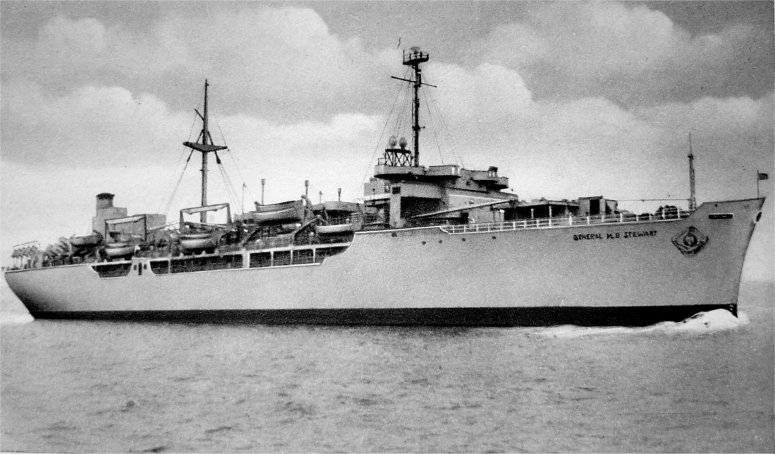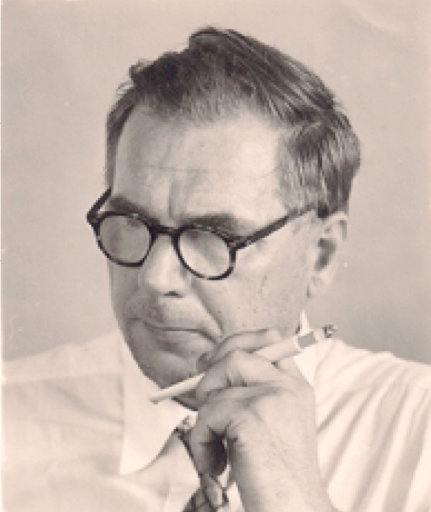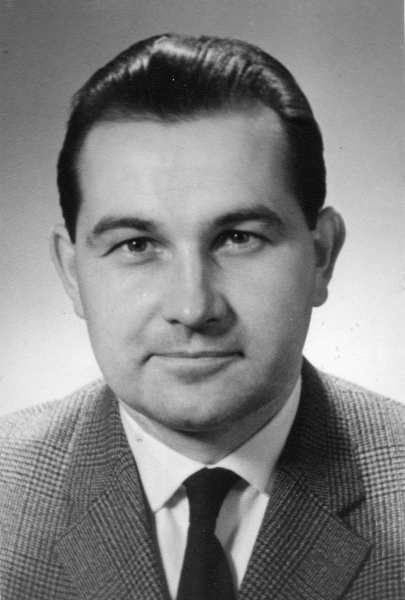How Foreign STEM Professionals Developed Venezuelan Science
When Venezuela was considered a land of opportunities, some immigrants were university graduates in science, technology, engineering and mathematics who spread ideas and developed institutions that are very much alive today, all over the world.


Photos: retrieved
After WWII, a good number of displaced Europeans boarded former U.S. Navy ships to resettle on different countries around the world. Before reaching Brazil or the U.S., they stopped at Puerto Cabello to disembark those refugees whose new destiny was Venezuela. From the port, they were taken to the Centro de Recepción de Inmigrantes, in Carabobo.

USAT General M. B. Stewart departing Bremerhaven in the early 1950s. Source: Navsource.org
They got a medical check-up, a Venezuelan ID and 33 bolivars (about $10). Most of these new immigrants had been carefully selected from European refugee camps by several traveling commissions; among them were people like the Georgian physicist Danil Toradse, Czech artist and engineer Carlos Stöhr and Hungarian mechanical engineer Iván Fényes, one of the founding fathers of the School of Mechanical Engineering at UCV.
Fényes came aboard the USAT General M.B. Stewart with his wife Marianne, and two young daughters, one of which, Ildikó Fényes, graduated in Physics from Vassar College and Bryn Mawr College, and returned to Venezuela to become the first woman to teach physics at the UCV School of Physics and Mathematics.
Children of a Remote War
The aftermath of the Spanish Civil War also brought to Venezuela hundreds of STEM professionals and doctors, like physiologist Augusto Pi Suñer, nutritionist José María Bengoa, and dermatologist José Sánchez Covisa. Also, mathematicians, physicists, chemists, architects and geologists.
Many of Venezuela’s scientists came to the country as small children and were educated at Venezuelan and international institutions. Lutz Dohnert, born in Germany in 1939, studied physics at UCV and got a Ph.D. in nuclear physics at MIT; Henryk Gzyl, born in 1946 in Stuttgart to Polish parents fleeing the advance of the Red Army, studied physics at UCV and got his Ph.D. in Mathematics at UC, San Diego. An expert in Probability and Stochastic processes, he won the Polar Foundation 2019 Science Award, currently the most prestigious science award in Venezuela.
Makie Kodaira came to Venezuela in 1957 as a member of a selected group of Japanese immigrants, graduated in Education (concentration in Biology) at the Catholic University Andrés Bello (UCAB) and did graduate studies in Food Science at Hiroshima University. She’s an expert in the technology of fishery products and trained many Venezuelan professionals during her years teaching at the UCV. Polish-Venezuelan mathematician Marco Paluszny, born in Lodz, Poland, came to Venezuela when he was nine years old and studied Mathematics at UCV and later pursued a Ph.D. in Mathematics (Geometry) at UC, San Diego. He’s currently teaching mathematics at the Medellín Campus of Colombia’s National University.
One immigrant child worth remembering is Jewish chemist Gabriel Chuchani. Born in Jerusalem, he came to Venezuela in 1929. After primary and secondary studies in Caracas, he traveled to the United States for undergraduate and graduate degrees in Chemistry, before founding IVIC’s Chemistry Laboratory. He’s among the fathers of modern chemistry research in Venezuela.

Russian civil engineer Anatol Zagustin (circa 1950). Source: VES Project archive
Another good example is the Zagustin family. Between 1932 and 1941, Anatol Zagustin, born in Leningrad, was the head of the Department of Theoretical Mechanics at Voronezh State University. With the German advance over the Soviet Union, he was captured with his family and sent to a labor camp in an area controlled by the Germans. After the war, Anatol, his wife Taisa Isaenko, and two children Elena and Konstantin, managed to reach German territory under American occupation. In 1947, the Zagustin family came to Venezuela. Anatol became a Professor of Civil Engineering at UCV, Taisa was a chemist who worked for the Venezuelan Ministry of Health (MSAS). Both their children graduated as civil engineers from UCV and went to Stanford University for their Ph.D. degrees. Elena became a professor at several universities in the United States and Konstantin developed a brilliant career in Venezuela at UCV and at Intevep (the main research center for the Venezuelan oil industry), where he appears as co-inventor in research projects that produced several patents, like the core-annular flow process.
The Foreign Experts
But not all STEM immigrants came as WWII refugees. Some came attracted by the technical needs of the oil and gas industry or thanks to international technological cooperation, as many French scientists and engineers who came as “coopérants,” in lieu of their French military service.
Among them, working for the Venezuelan Ministry of Agriculture, were Swiss botanist Henri Pittier (1857-1950) who came to Venezuela in 1920; American agricultural geneticist and plant breeder Derald George Langham, landed in 1939; Argentinian plant geneticist Salomón Horovitz, in 1947; and agronomist Bruno Mazzani, in 1948. Venezuela owes a better knowledge of its flora and improvements in agriculture to them.
Dutch electrical engineer Jan Deketh helped to develop telecommunications training in Venezuela. German astronomer Jürgen Stock, who helped to build a new astronomical observatory in Llano del Hato, Merida, was the founding director of the Centro de Investigaciones de Astronomía (CIDA); German engineer Heinz Günther Henneberg came to Maracaibo in 1959 as the engineer in charge of the geodesic survey required for the construction of the Lake of Maracaibo bridge and decided to settle down, becoming the head of the University of Zulia’s Geodesic Department.

Dr. Manfred Hunger (German-Venezuelan experimental physicist born in Wuppertal in 1931)
There’s also the case of Paulino Andreu, a physical chemist of Spanish origin, who helped start the field of catalysis in Venezuela; and French chemical engineer Jean-Louis Salager founded at the University of Los Andes one of the best university research laboratories in Venezuela: the Formulation Interfaces Rheology and Processes (FIRP) Laboratory; Manfred Hunger was instrumental in the creation, at the Faculty of Science (UCV) of the field of Molecular Physics and Nuclear Magnetic Resonance.
In 1955, with backing from the government, well-known Venezuelan scientist Humberto Fernández-Morán created the Venezuelan Institute of Neurology and Brain Research, inviting then several foreign scientists to join him. Among them were two biomedical researchers, the Finish physiologist Gunnar Svaetichin, and Austrian virologist Gernot Hildebrand Bergold. Both later adopted Venezuela as their new homeland.
Gernot Bergold, born in Oderfürt, is considered the father of virology research in Venezuela. An orchid lover, he dedicated himself to the description and conservation of orchids, dying in Caracas at the age of 92.
During the 1960s and 1970s, it was easy for all of these foreign scientists to accept job offers at Venezuelan universities and scientific institutions, because salaries were very competitive —the monthly salary for a tenured professor at the University of Columbia, in New York, was $1,042 in 1960-1961; at UCV, in the same period, a tenured professor earned $1,062.
Political turbulence has also been an important factor in the mobilization of Latin American scientists across borders, and from the early 1960s, many STEM sureños came to live in Venezuela. In 1958, when the government decided to build a new national university in Eastern Venezuela, UDO, there weren’t enough Venezuelan scientists to join the School of Science. With financial help from the Ford Foundation and support from the University of Kansas, a project called “KUUDO Plan” was set up to bring dozens of Kansas professors and recent Ph.D. graduates from KU to work in Venezuela for several years. Scientists like biologist Andrew Torres, bat specialist James D. Smith, chemist David E. Peters and physicist Jacob Enoch came to the country to teach and carry out research projects, creating scientific institutions along the way.
Our research has identified 16 Japanese scientists acting in Venezuela for large periods of time too, among them mathematician Yoshikatsu Yoshida, biophysicist and microscopist Mitsuo Ogura and biomedical researcher Tamotsu Imaeda. From China came economist and demographer Chi Yi Chen, and out from the Chinese diaspora born in Venezuela we have physicist Yolanda Mi Lien Ng Lee, brothers Oscar Chang (electrical engineer) and Víctor Chang (mechanical engineer), and robotics expert Carolina Chang.
In 1992, using data from a survey carried out between 1976-1978, with the participation of 473 STEM professionals, Marcel Roche and Yajaira Freites reported in their Rise and Twilight of the Venezuelan Scientific Community that 34.1% of these professionals were of foreign origin; between 1960 and 1980, the proportion of foreign researchers at Venezuelan universities varied from 27% to almost 100%, depending on the time period and educational institution.
All of these academics can serve as role models for new generations, although their stories are pretty much unknown. In the global knowledge network of today, where the merger of biotech and infotech confronts us with the biggest challenges humankind has ever encountered, no developing nation can aspire to achieve any meaningful development without a strong local scientific and technological knowledge base.
These foreign STEM professionals were instrumental in the education of many Venezuelan scientists and engineers who have emigrated to different countries and are now very successful all over the world—for instance, Cristina Amon, Dean Emerita of Applied Science, University of Toronto, and graduate from the Simón Bolívar University. In other words, there’s a connection between “los que vinieron” y “los que se fueron”.
To rescue this memory and build biographical profiles of the valuable STEM migration in and out of Venezuela, in 2013, I created an independent research initiative, VES PROJECT, based in Caracas, Venezuela. To support the VES PROJECT, click here.
Caracas Chronicles is 100% reader-supported.
We’ve been able to hang on for 22 years in one of the craziest media landscapes in the world. We’ve seen different media outlets in Venezuela (and abroad) closing shop, something we’re looking to avoid at all costs. Your collaboration goes a long way in helping us weather the storm.
Donate




